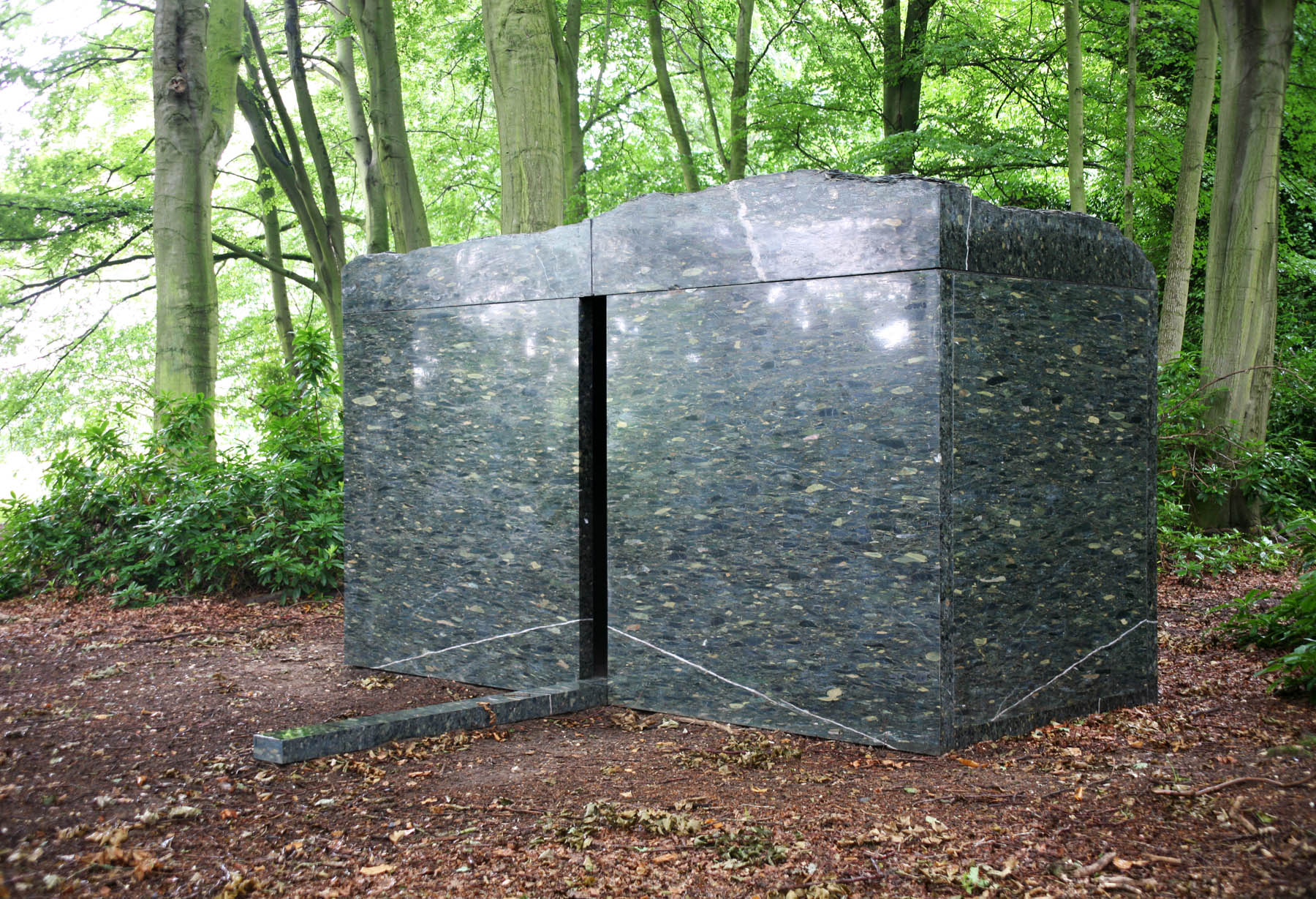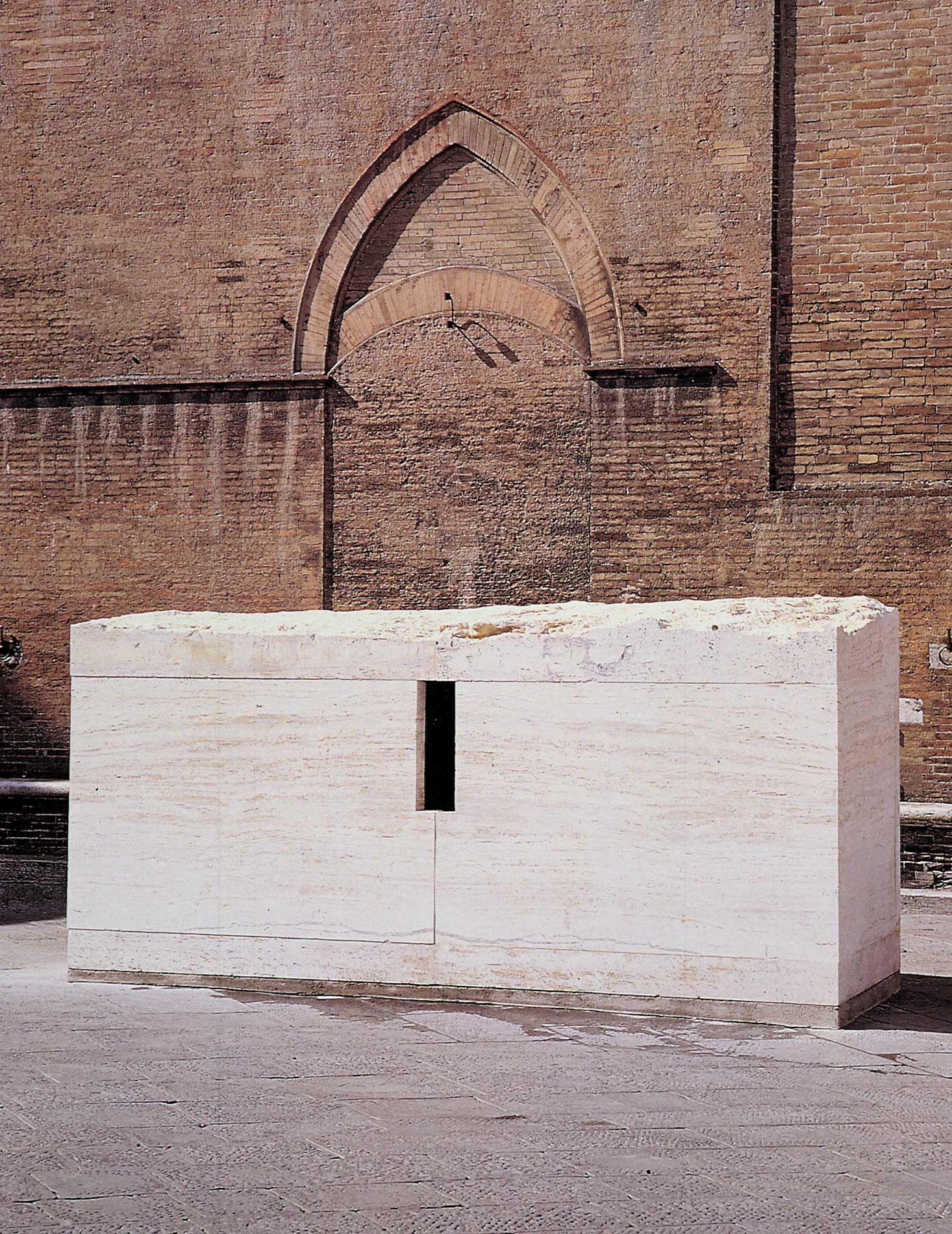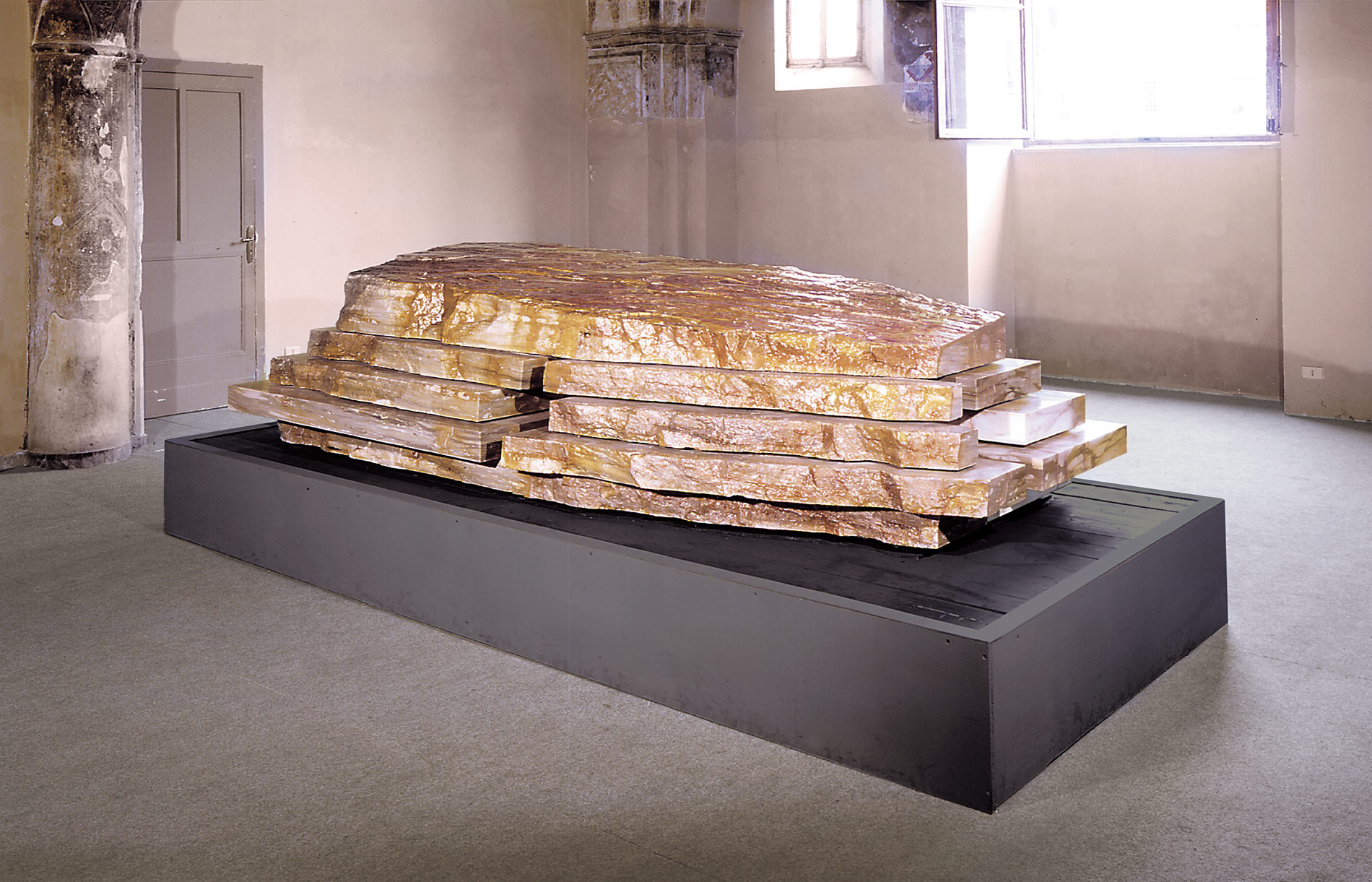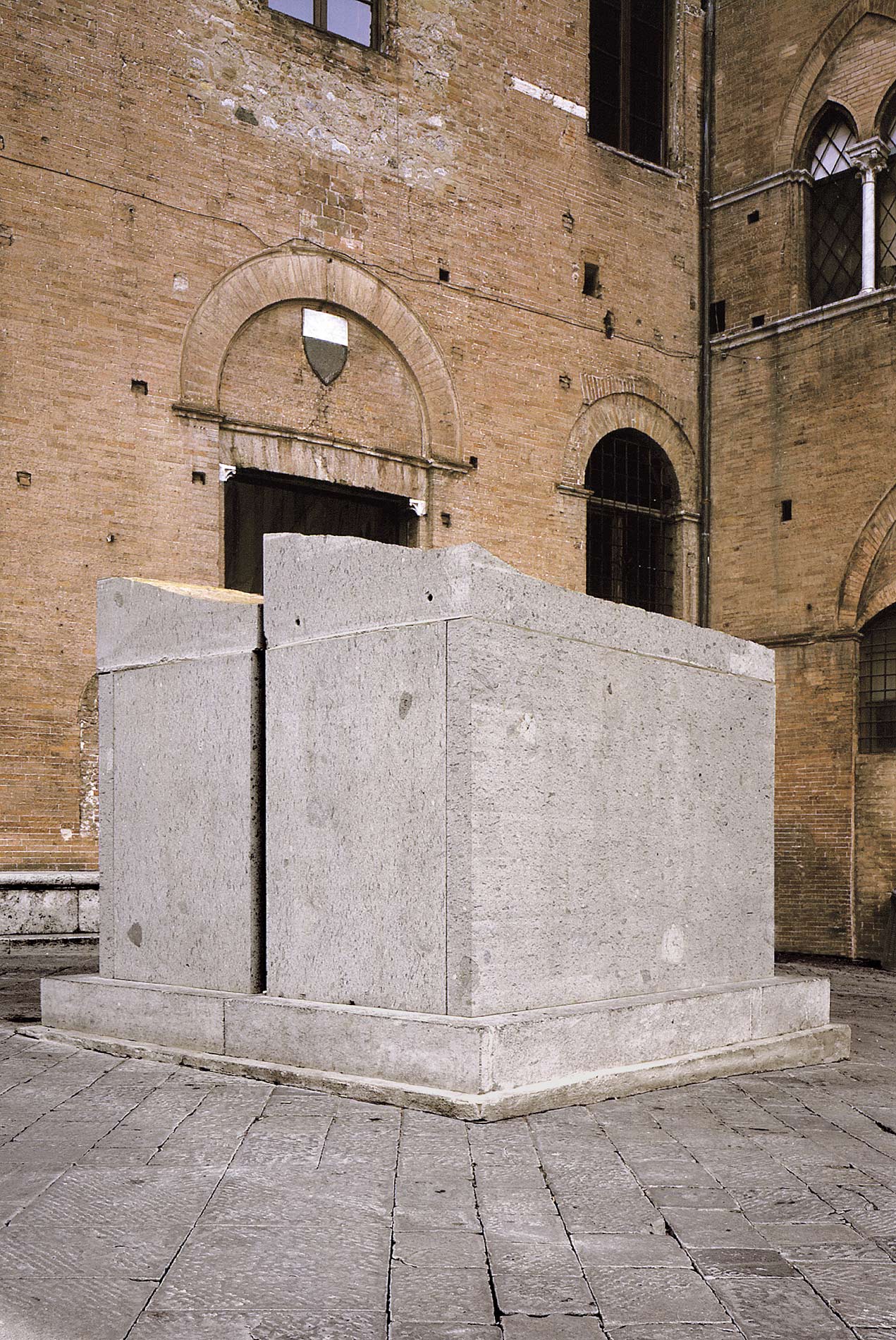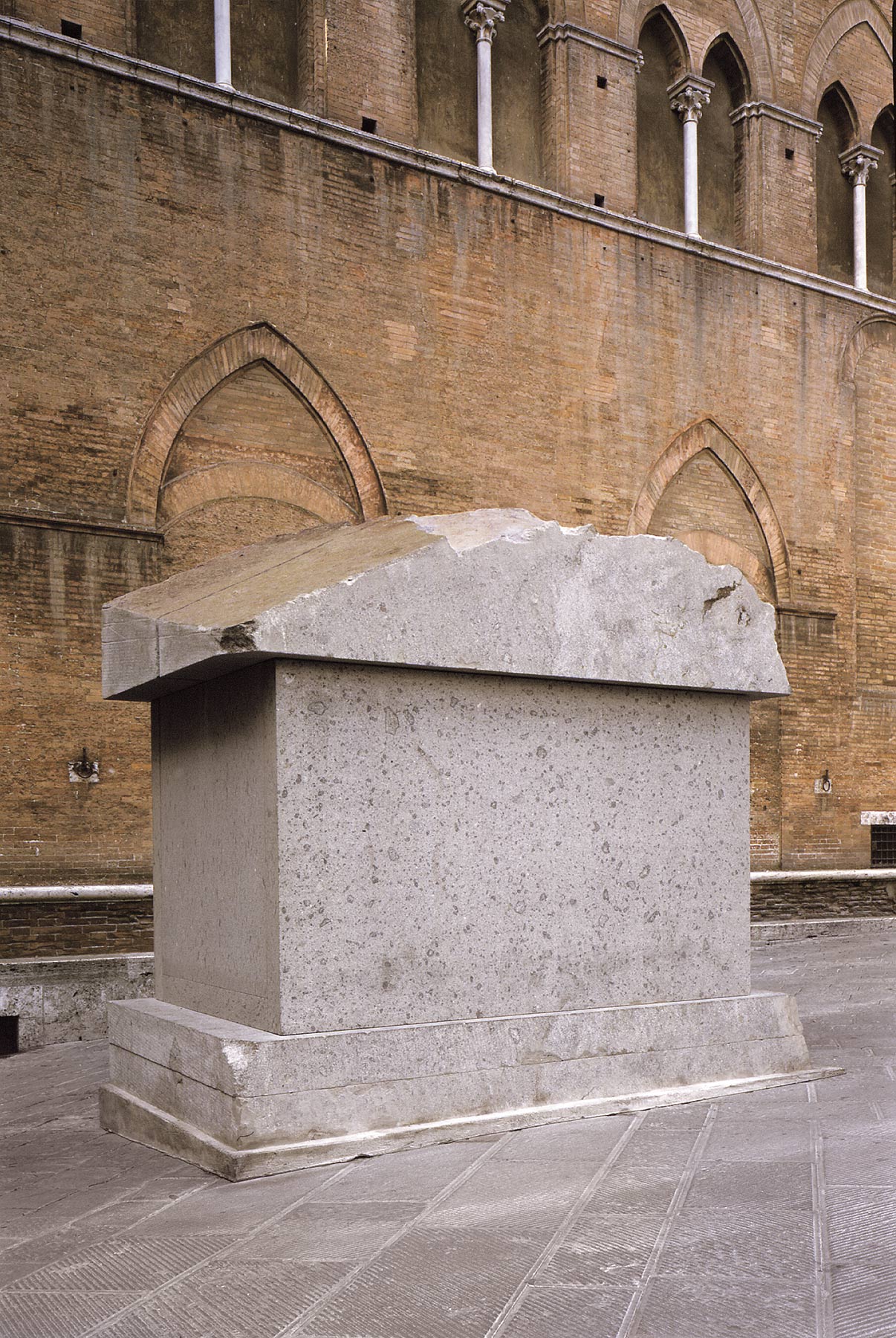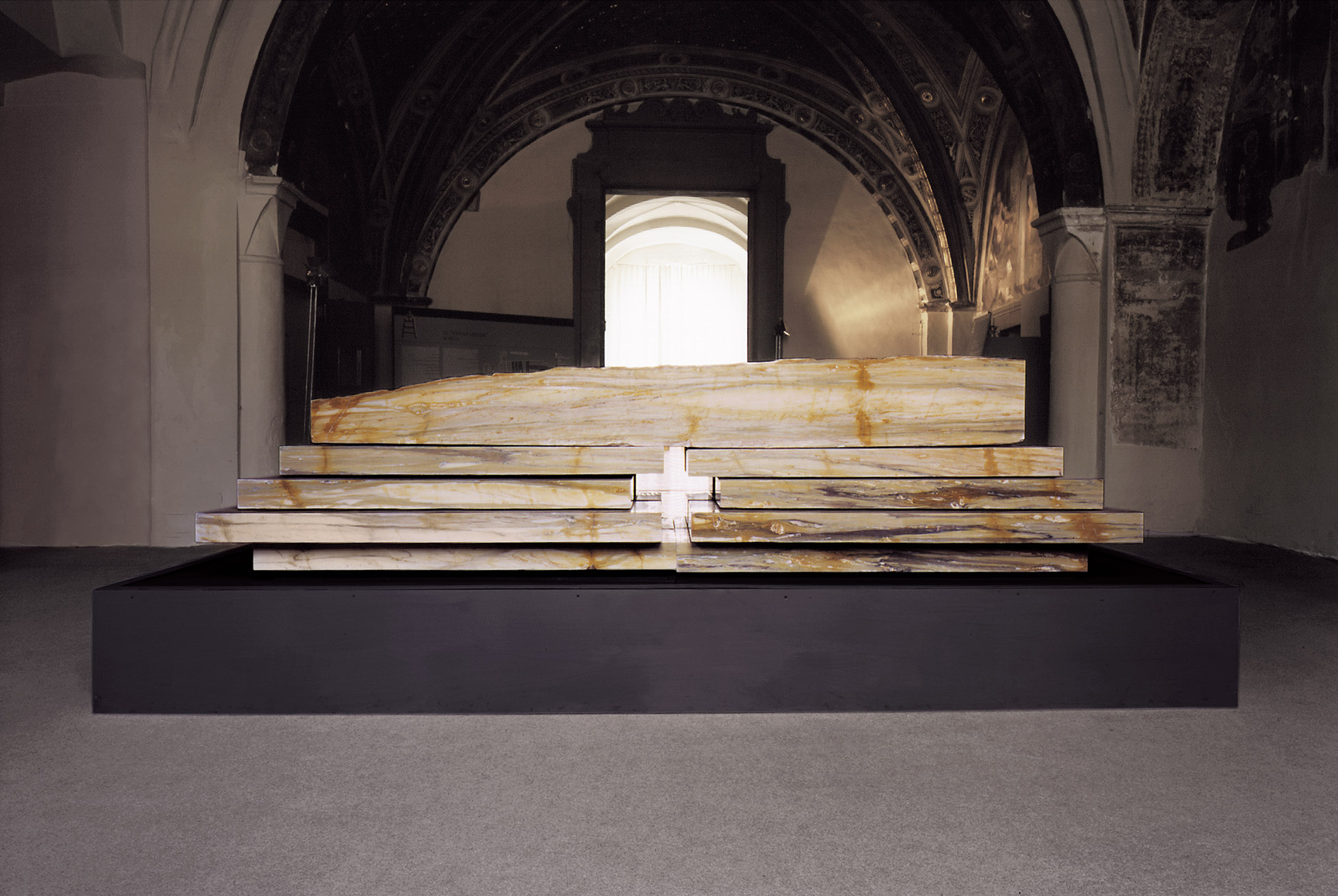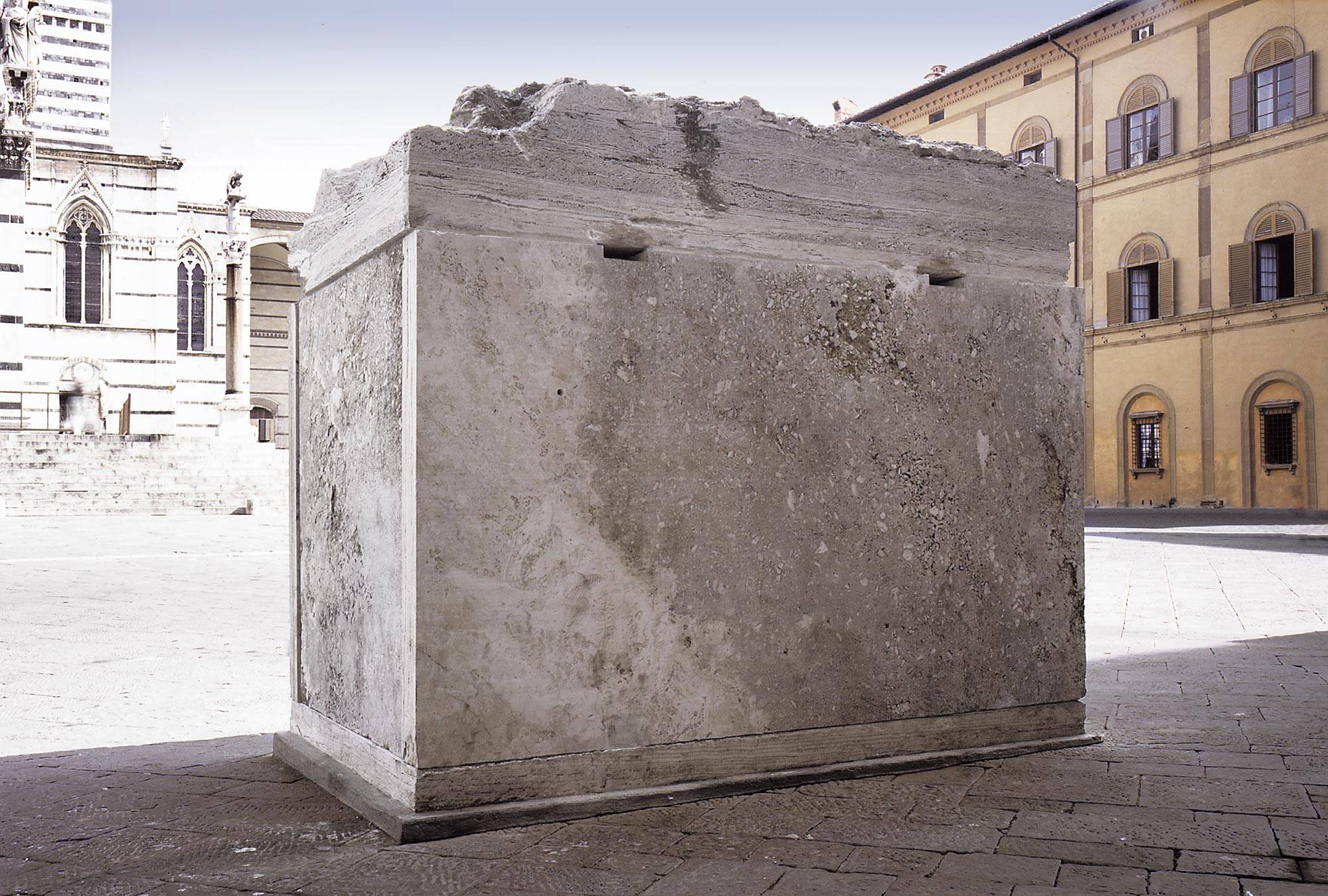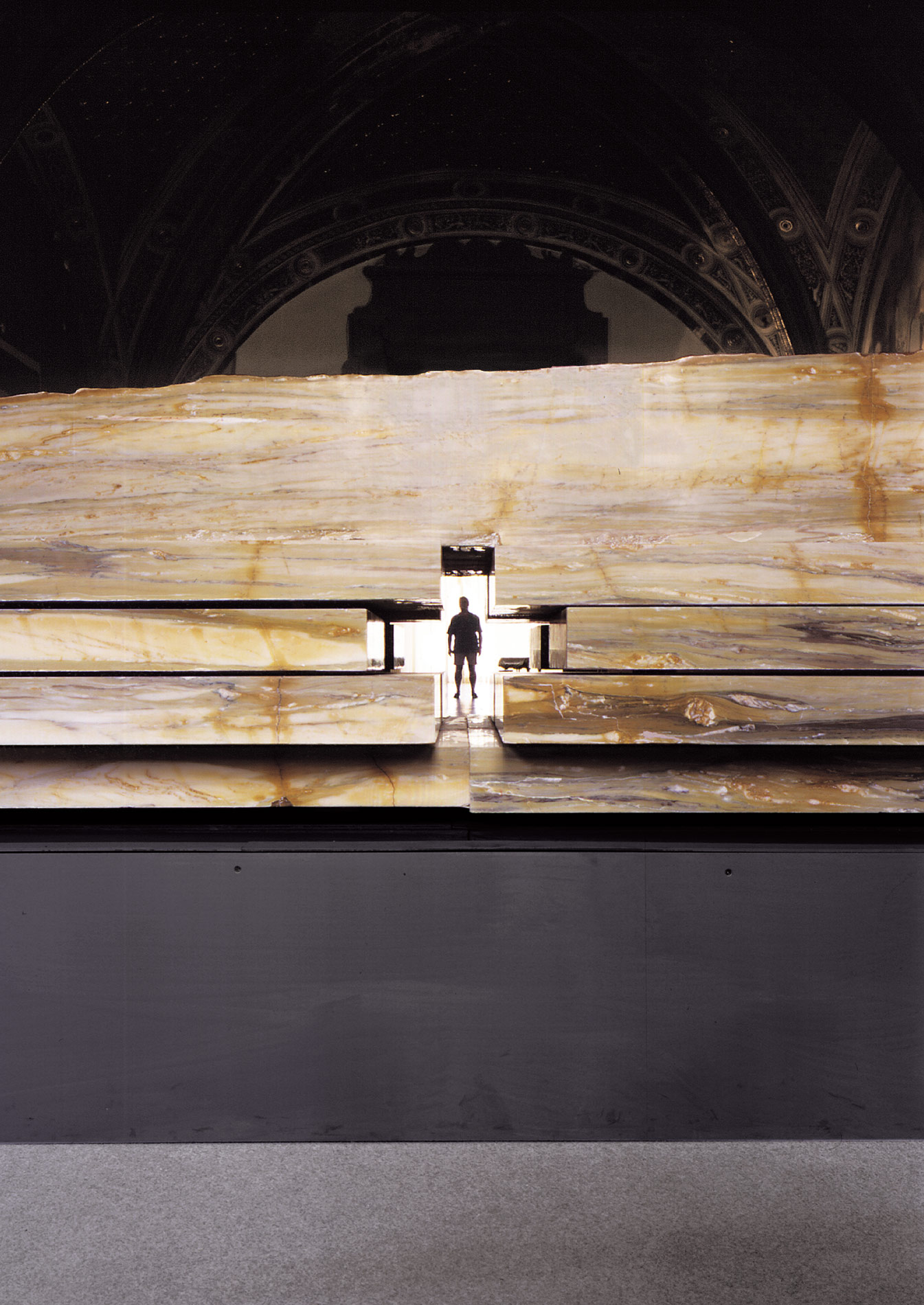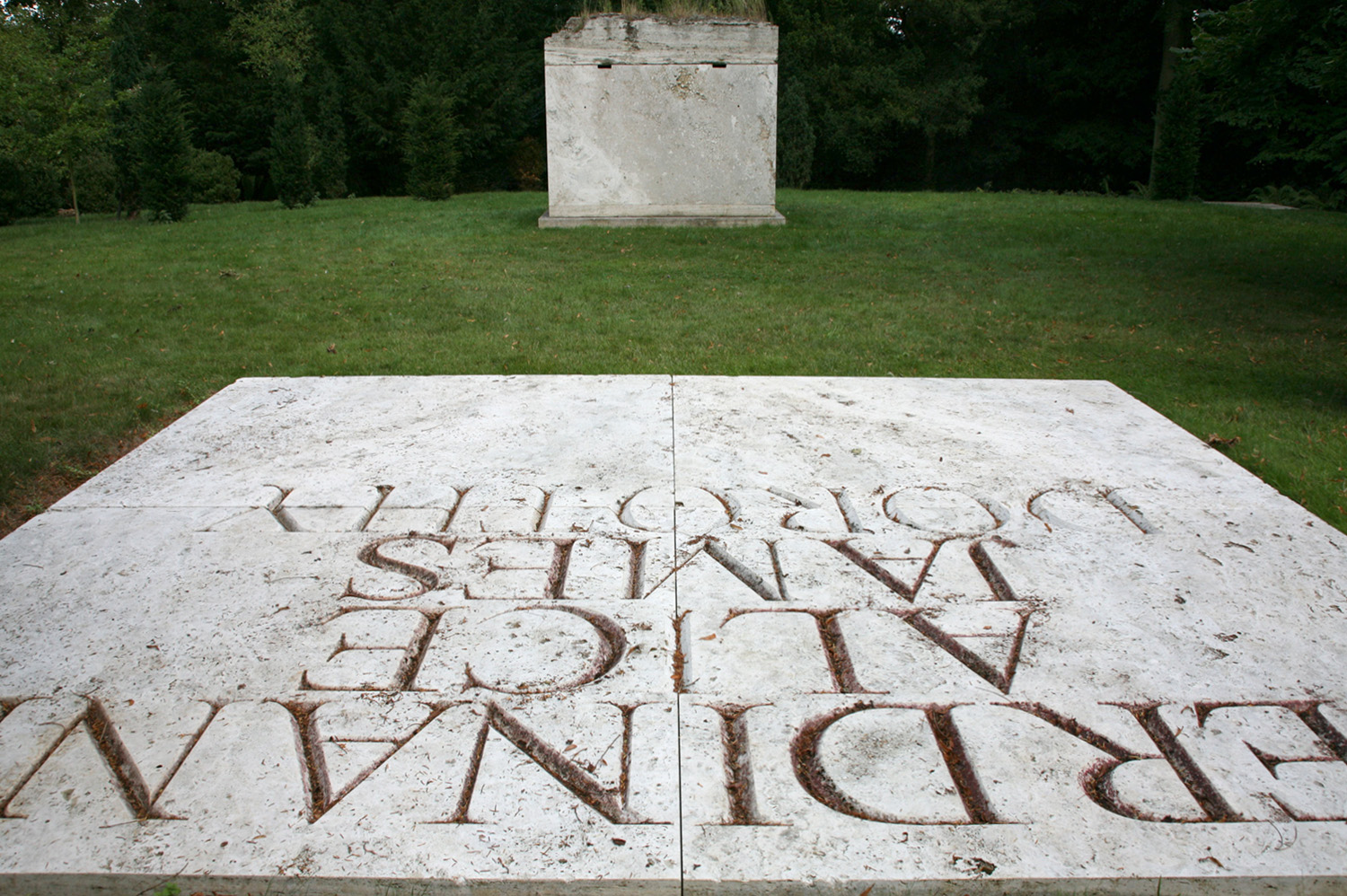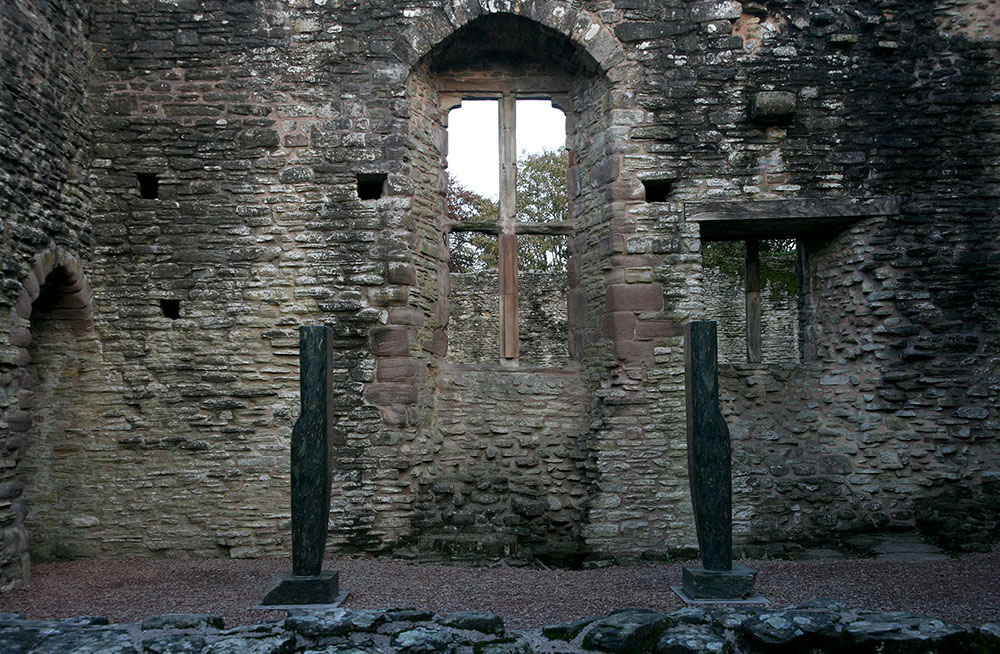
The Fiery Kind, 1983
The Fiery Kind, 1983
Red Verona marble
110 x 130 x x 3 cm
The British Council
Ecstacty: St Agatha, 1983
Ecstacy: St Agatha, 1983
Red Verona marble
280 x 440 x 3 cm
Private Collection London
Exhibition Tate Gallery, Millbank lawn
Chrysalis, 1989–91
Chrysalis, 1989–91
Porphyry
92 cm x 285 cm x 100 cm
Tate Collection
See more works in the Tate Collection:
Hymn, 1990-1
Hymn, 1990-1
University of Kent, Canterbury
Indian Granite
More works in Canterbury:
Mantra, 1992
Mantra, 1992
Black Indian Granite with Oil
487cm (192") x 426cm (168") x 122cm (48")
The British Council, New Delhi
Interior Space, 1995
Interior Space, 1995
Carved Egyptian breccia
Houghton Hall, Norfolk
This sculpture was commissioned by the Henry Moore Foundation for the exhibition Stephen Cox: Surfaces and Stones of Egypt at the Henry Moore Institute, Leeds in 1995.
Interior Space was made in Egypt with stone procured from the desert of the Eastern Mountains near the site of the ancient gold mines and stone quarries of Waddi Hammamat. These quarries and mines are registered in the World’s oldest geological map which is in the Egyptian Museum in Turin and date from the time of Pepi III. The quarries there evidence its use with graffiti scratched into the walls of the Wadi (valley) dating back to Pre Dynastic times around 3,500 BC with later visits there from as far afield as Persia from where Darius the Great and Xerxes sent expeditions for this famous stone.
This fourteen ton sculpture is constructed but references the sheer scale of the monolithic sarcophagi of the Apis Bulls at Sakkara larger than any carved out for even the greatest Pharaoh.
The imaginative conceptions of the ‘afterlife’ of the peoples of ancient civilizations is the driver of the series of Interior Spaces that Cox has produced since 1995.
This the first of the Interior Spaces was exhibited after the Henry Moore Institute in the centre of the Central Hall at the Royal Academy Summer Exhibition in 1996, Stephen Cox at The Dulwich Picture Gallery 1997 and British Sculpture at Schloss Ambras, Innsbruck 1998-9. It was purchased by Lord Chalmondely for Houghton Hall in 2000.
Also at Houghton Hall:
Flask II, 2002
Hand-carved Egyptian breccia
Interior Space, Ospedale di Santa Maria della Scala, 1999
Interior Space, Ospedale di Santa Maria della Scala, 1999
Piazza del Duomo, Siena
Interior Space: Shrine (a Porphyra), 2000
Interior Space: Shrine (a Porphyra), 2000
Imperial Portphyry and Bardiglio Imperiale
2330 x 4300 x 2000 mm
Commissioned by the National Gallery for the Millenium exhibition 'Encounters New Works from Old' 2000
Yoginis, 2000 - 2010
Yoginis: Ox, Ram, Elephant, Horse, Hog, 2000 – 2004
Yoginis; Buffalo, Crocadile, Rabbit, Cobra, 2004 – 2010
Charnockite (basalt) each sculpture is approximately 200 cm x 55 cm x 40 cm
See all the works at this exhibition below:
Interior Space: Terra degli Etruschi, Inscribed Pavement & Circular Altar, 1999-2002
Interior Space: Terra degli Etruschi, Inscribed Pavement & Circular Altar, 1999-2002
Travertine Stone
250 x 292 x 172 cm
Interior Space: Terra Degli Etruschi was installed in the Baron’s Walk at Waddesden Manor in 2003. The sculpture was one in a number of sculptures made in 1999 for an exhibition entitled Interior Space in the Piazza del Duomo and Ospedale Santa Maria della Scala in Siena. The theme of the exhibition was to work with stone from throughout the area of the Etruscan civilization. It was seen as an ‘omage’ to their conception of the afterlife and preoccupation with necropolis and their furnishing. Stones included white Carrara marble, volcanic peperino and the Sienese travertine of which this sculpture is made from the quarries of Dei. Hence the title which translates as ‘The Earth of Gods’
This stone has been formed in historical rather than geological time as scattered upon its capping stone are fragment of terra cotta from Etruscan pots that have become embedded in the developing stone itself. Perhaps even the flora growing from it are too from seeds of ancient days.
Subsequent commissions for the Inscribed Pavement and the Altar were made with Massive slabs and blocks from the Quarries of Dei.
By way of the provenance, the sculpture was exhibited in the the ancient alpine Roman city of Aosta with the other Interior Space pieces from the Siena exhibition, in sites around the city and at the main Museum in the town. The exhibition was curated by Luigi di Corato and represented as the work of a Grand Tour entitled Fasti (a Roman calendar or register of events) was paired with an exhibition of J.M.W.Turner’s paintings of the ValD’Aosta at the Museum.
Dreadnought: Problems of History, the Search for the Hidden Stone, 2003 - ongoing
Dreadnought: Problems of History, the Search for the Hidden Stone, 2003 - ongoing
Brecciated Imperial porphyry, 1 m x 2.7 m x 0.85 m
Installation photo at Chatsworth House
Installation photos in Bristol
Gemini, 2004
Gemini, 2004
Loaned to Canterbury Cathedral from 2016-2017
These two figures are created from the same block of stone. As in a mirror the two pieces share the same characteristics.
From Waddi Hammamat in Upper Egypt between Qift in the Nile Valley and Al Quasayr on the Red Sea Coast, this conglomerate has been prized for longer than any other stone. The walls of the quarry testify to its having been used since pre dynastic times through the history of Egypt and so famed throughout the ancient World that Darius and Xerxes of Persia sent expeditions to procure it as did Philip of Macedonia, the father of Alexander the Great. Little used since antiquity, the quarry walls have wonderful ‘graffiti’ scratched into the rock faces showing popular gods and documenting the many expeditions from the past. The wadi (valley) was also ‘the fabled land of Koptos’ and the source of the Pharaoh’s gold. The stone is known variously as ‘Breccia Universale’, ‘Antique Egyptian’ or ‘Hammamat Breccia’ and Bekhen Stone that is a conglomerate cemented in a metagraywacke sandstone. It is strewn with bight coloured ‘pebbles’ and fragments of diverse stones :- granites, basalt, quartzes, schists, hornblende and hematite of red, yellow, black and pink in a greenish matrix with occasional white veins are why it has been prized for its beauty. These periods of activity have been recorded on the walls of the quarries with famous graffiti that has been left by the quarrymen. The graffiti consists of inventories of men and provisions that were tallied by the masters as well images of idols and offerings some simple, others technically very accomplished others primitive, expressing the yearnings of lonely men in a savage desert environment.
The Gemini series of sculpture deals with the relationship between two figures that share the family characteristics of the same block of stone and like the generative life force of a splitting cell. This is the first Gemini sculpture and was shown originally at ‘Sculpture in the Quad’ at Lincoln College Oxford where Cox was Montgomery Fellow in Sculpture 2009 followed by the Royal Academy Summer Exhibition in 2010 then The Meaning of Stone at Ludlow Castle in 2011.
At Canterbury Cathedral, in the new garden in the shadow of the Cathedral, the sculpture’s dualism symbolises the first life on earth with the splitting of the cell and of Adam and Eve.
This work was also displayed at Ludlow Castle in 2011 as a part of an exhibition called The Meaning of Stone - Images of this piece are below.
More works in Canterbury:
St Anselm's Altar, 2005
St Anselm's Altar, 2005
St. Anselm's Chapel, Canterbury Cathedral
More works in Canterbury:
Cruel Stones of St. Stephen, 2007
Cruel Stones of St. Stephen, 2007
Carved Egyptian porphyry
Height 16cm (6 1/4") Width 47cm (18 1/2") Depth 35cm (13 3/4")
This work is currently on show with Adrian Sassoon, London.
I stood outside a gate of Jerusalem at the spot where my namesake was stoned to death. The emotion was of horror of a world past and the use of porphyry appropriate to a commemoration of that moment.
Egyptian porphyry was exclusive in the Roman Imperial era and, after the conversion of Constantine, became symbolic of the Holy Blood of Christ and significant in church decoration through the Byzantine era. I have used Egyptian porphyry for a number of sculptures representing saints’ ‘attributes’; griddles dedicated to St Lawrence, the Sword of St George, and the Lance of St Thomas amongst others.
This sculpture dedicated to Stephen has added poignancy in a world where stoning to death is not an act of the distant past.






























